- 2 402 202 книги
libcats.org


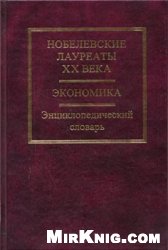
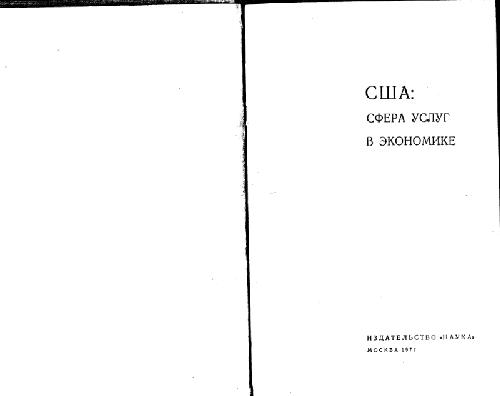
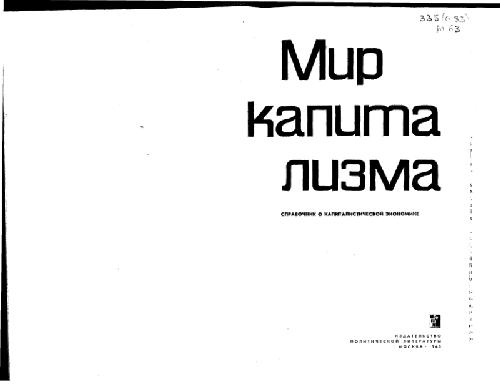
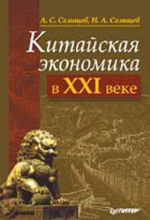
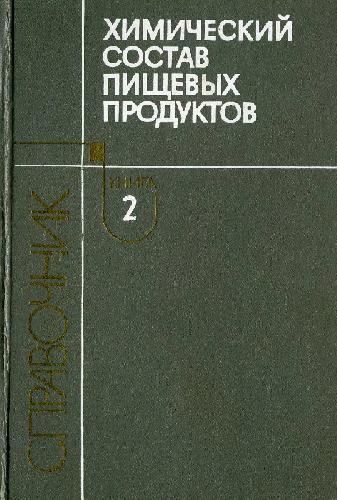
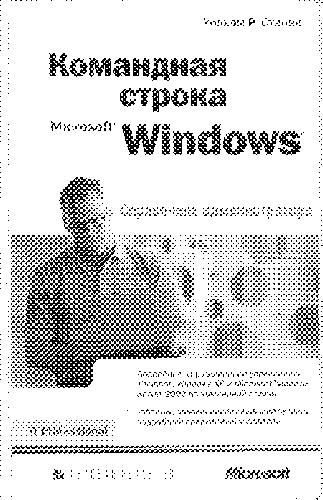
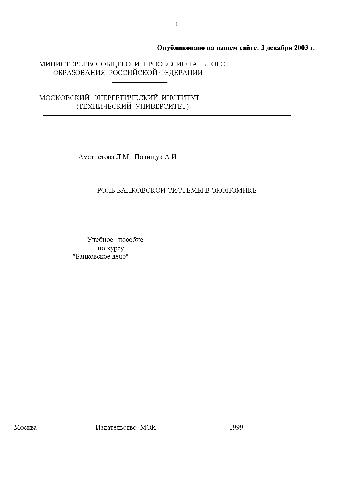

The Great Famine
William Chester JordanRead this for graduate history course in medieval history.
William Jordan Book is great as a source material book. Excellent scholar. One of the 1st Economic, environmental historicists. A Good multi disciplinary approach. His mortality numbers tend to be on the conservative side. A food shortage is when 1 staple is unavailable or food unavailable for 1 year. Those items people crave are more expensive but are attainable. Great Famine is a catastrophic failure of agriculture. All food groups fail items unavailable for any price. Because of famine, you get weir foods like acorn bread, awful taste. 1315-22, does not affect Spain, Italy, Greece, and Scotland. Bad in Germany N. France, Scandinavia England, Ireland. 400,000sq. miles, 30 million people. Famine follows big population explosion 1100-1300. 1250 agricultural productivity is declining. As population increases technology in food production can't keep up. 3 field crop rotation means 1/3 of field is fallow. Harness technology goes to animal shoulder to increase productivity, better plough blades thus soil gets better aeration. Green manure is bean plants rich in nitrogen get plowed into ground, brown manure is animal and human waste. Cattle graze on land leaving droppings. 14 century animals not producing enough manure as #'s dwindle, Increase in population means more marginal land is being farmed not working out well, also means more calories burned working marginal land than being produced. Also means livestock have less land to graze on.
Page 12-13 Looks at David Arnolds 4 scenarios for the inset of famine. 1. Population numbers are higher than productive means. 2. Sustained failure of appropriate weather. 3. Problems of food distribution, from transportation and war. 4. Peasants not changing their growing methods to meet the problem. Jordan thinks the most troubling scenario is the last one.
We have good skeletal remains to show that their was a lot of bone problems from people working hard in the fields. Biggest cost for medieval people is food, 70% of income; housing is only 10% of income. When food in Paris increases 800% you know you will have food riots. No good social systems to deal with the problem. They ate their seed corn, grains, and rye susceptible to molds, and fungi poisoning people. Can't store grain for long periods of time, rats eat allot of grain in storage. There is no fallback for people agriculturally. Seeds produce 4 or 5 to 1. You get 4 seeds for 1 planted. Less animals means less manure. Chicken eggs are used to pay rent, chickens are the size of today's game hen's chickens get eaten fast.
Jordan says this won't happen today because we have global agriculture and world wide distribution system. Only happen in regions as political tool, like Darfur, or what Stalin did using food as a weapon. Long term suffering and starvation was more routine to these people's lives, did not affect them psychologically as the Black Death when you look at manuscript records. City people even send pirates out to take grain ships. Women survive better than men because they have more body fat.
Food hoarders, Jews as money lenders do not fair well with starving people going after them. Government starts to control food production like standardizing weight and size of bread loafs, some still do this today. Bread is important to people because of Eucharist. High prices cause a slow down of consumption, but it doesn't solve the problem. People will eat what you put in front of them. Stomachs will shrink.
Pigs survive best, they eat anything, rain doesn't bother them, they don't get rinderpest hooves don't rot. Cattle sheep get disease, sheep susceptible to cold. Horses stolen by the army. Short term 50% in herds, 75% drop long term. Wool income in England goes down. Who profits? Salt producers, need salt to make dairy products like cheese and to salt meat to preserve it. They use a lot of forest wood to make salt because they steam seawater. Some Lords and Abbots make profits. Many church lands are sold off, peasants are able to buy it cheap for those that have money, and some do, this makes them landed gentry in next century. Charity fails. Church can't run soup kitchens any more, but they do make money running a form of nursing home. Beggars increase, people turn to strange diets, roots, dirt, bark, shoes, etc.
Grains are known as cereals, British historians call grains corn not the same as Maze which we call corn. Corn is New World crop.
Primary cereal grain is wheat, high in gluttons, protein 13% in white bread, very desirable, for aristocracy. Easier to chew, 35-50% grain milled out of it. Average monastic person gets 2500-3000 calories, one of the better diets of the time. Rich eat no fruits because of sin of fruit from Tree of Knowledge. Peasant 2000-2200 calories, subsistence living. They are living on the margins. Livestock of the time smaller by 40%, people are smaller average height 5' 6". Protein intake is reason for this. Rickets, scurvy all problems. Cabbage only source of vitamin C for most Europeans. Pigs last longest since they eat anything.
1320-1330 2nd worst cold period in middle ages, 1310-1320 2nd worst time for excessive rains. 1314 bad rains in Summer in Germany. 1315 Baltic salt sea freezes over. All Rivers in Europe freeze over. This persists until 1322 in Baltic of that year snow stays on the ground all year round. Wars make things worse for people. People psychologically spooked by increase in meteor and comet activity.
The Great Famine of 1315-1317 (or to 1322) was the first of a series of large-scale crises that struck Europe early in the 14th century, causing millions of deaths over an extended number of years and marking a clear end to an earlier period of growth and prosperity during the 11th through 13th centuries. Starting with bad weather in the spring of 1315, universal crop failures lasted through 1316 until the summer of 1317; Europe did not fully recover until 1322. It was a period marked by extreme levels of criminal activity, disease and mass death, infanticide, and cannibalism. It had consequences for Church, State, European society and future calamities to follow in the 14th century.
Famine in the Medieval European context meant that people died of starvation on a massive scale. As brutal as they were, famines were familiar occurrences in Medieval Europe. As an example, localized famines occurred in France during the 14th century in 1304, 1305, 1310, 1315-1317 (the Great Famine), 1330-1334, 1349-1351, 1358-1360, 1371, 1374-1375 and 1390. In England, the most prosperous kingdom affected by the Great Famine, there were famines in 1315-1317, 1321, 1351, 1369, and more. For most people there was usually never enough to eat and life was a relatively short and brutal struggle to survive to old age, which might mean as young as 30 years old. According to official records of the British Royal family, the best off in society, the average life expectancy in 1276 was 35.28 years. Between 1301 and 1325 during the Great Famine, it was 29.84 while between 1348-1375 during the Plague it went to 17.33.
The Great Famine was restricted to Northern Europe, from Russia in the east to Ireland in the west, from Scandinavia in the north and bounded in the south by the Alps and the Pyrenees. During the Medieval Warm Period (the period prior to 1350) the population of Europe had exploded, reaching levels that were not matched again in some places until the 19th century (parts of France today are less populous than at the beginning of the 14th century). However, the yield ratios of wheat (the number of seeds one could eat per seed planted) had been dropping since 1280 and food prices had been climbing. In good weather the ratio could be as high as 7:1, while during bad years as low as 2:1--that is, for every seed planted, two seeds were harvested, one for next year's seed, and one for food. By comparison, modern farming has ratios of 200:1 or more.
However, there was one catastrophic dip in the weather during the Medieval Warm Period that coincided with the onset of the Great Famine. Between 1310 and 1330 northern Europe saw some of the worst and most sustained periods of bad weather in the entire Middle Ages, characterized by severe winters and rainy and cold summers. Changing weather patterns, the ineffectiveness of medieval governments in dealing with crises and a population level at a historical high water mark made it a time when there was little margin for error.
Great Famine
In the spring of 1315, unusually heavy rain began in much of Europe. Throughout the spring and summer, it continued to rain and the temperature remained cool. Under these conditions grain could not ripen. Grain was brought indoors in urns and pots. The straw and hay for the animals could not be cured and there was no fodder for the livestock. The price of food began to rise. In England, food that had sold for 20 shillings in the spring sold for 40 shillings by June, doubling in price. Salt, the only way to cure and preserve meat, was difficult to obtain because it could not be evaporated in the wet weather; it went from 30 shillings to 40 shillings. In Lorraine, wheat prices grew by 320 percent, making bread unaffordable to peasants. Stores of grain for long-term emergencies were limited to the lords and nobles. Because of the general increased population pressures, even lower-than-average harvests meant some people would go hungry; there was little margin for failure. People began to harvest wild edible roots, plants, grasses, nuts, and bark in the forests.
There are a number of documented incidents that show the extent of the famine. Edward II, K
William Jordan Book is great as a source material book. Excellent scholar. One of the 1st Economic, environmental historicists. A Good multi disciplinary approach. His mortality numbers tend to be on the conservative side. A food shortage is when 1 staple is unavailable or food unavailable for 1 year. Those items people crave are more expensive but are attainable. Great Famine is a catastrophic failure of agriculture. All food groups fail items unavailable for any price. Because of famine, you get weir foods like acorn bread, awful taste. 1315-22, does not affect Spain, Italy, Greece, and Scotland. Bad in Germany N. France, Scandinavia England, Ireland. 400,000sq. miles, 30 million people. Famine follows big population explosion 1100-1300. 1250 agricultural productivity is declining. As population increases technology in food production can't keep up. 3 field crop rotation means 1/3 of field is fallow. Harness technology goes to animal shoulder to increase productivity, better plough blades thus soil gets better aeration. Green manure is bean plants rich in nitrogen get plowed into ground, brown manure is animal and human waste. Cattle graze on land leaving droppings. 14 century animals not producing enough manure as #'s dwindle, Increase in population means more marginal land is being farmed not working out well, also means more calories burned working marginal land than being produced. Also means livestock have less land to graze on.
Page 12-13 Looks at David Arnolds 4 scenarios for the inset of famine. 1. Population numbers are higher than productive means. 2. Sustained failure of appropriate weather. 3. Problems of food distribution, from transportation and war. 4. Peasants not changing their growing methods to meet the problem. Jordan thinks the most troubling scenario is the last one.
We have good skeletal remains to show that their was a lot of bone problems from people working hard in the fields. Biggest cost for medieval people is food, 70% of income; housing is only 10% of income. When food in Paris increases 800% you know you will have food riots. No good social systems to deal with the problem. They ate their seed corn, grains, and rye susceptible to molds, and fungi poisoning people. Can't store grain for long periods of time, rats eat allot of grain in storage. There is no fallback for people agriculturally. Seeds produce 4 or 5 to 1. You get 4 seeds for 1 planted. Less animals means less manure. Chicken eggs are used to pay rent, chickens are the size of today's game hen's chickens get eaten fast.
Jordan says this won't happen today because we have global agriculture and world wide distribution system. Only happen in regions as political tool, like Darfur, or what Stalin did using food as a weapon. Long term suffering and starvation was more routine to these people's lives, did not affect them psychologically as the Black Death when you look at manuscript records. City people even send pirates out to take grain ships. Women survive better than men because they have more body fat.
Food hoarders, Jews as money lenders do not fair well with starving people going after them. Government starts to control food production like standardizing weight and size of bread loafs, some still do this today. Bread is important to people because of Eucharist. High prices cause a slow down of consumption, but it doesn't solve the problem. People will eat what you put in front of them. Stomachs will shrink.
Pigs survive best, they eat anything, rain doesn't bother them, they don't get rinderpest hooves don't rot. Cattle sheep get disease, sheep susceptible to cold. Horses stolen by the army. Short term 50% in herds, 75% drop long term. Wool income in England goes down. Who profits? Salt producers, need salt to make dairy products like cheese and to salt meat to preserve it. They use a lot of forest wood to make salt because they steam seawater. Some Lords and Abbots make profits. Many church lands are sold off, peasants are able to buy it cheap for those that have money, and some do, this makes them landed gentry in next century. Charity fails. Church can't run soup kitchens any more, but they do make money running a form of nursing home. Beggars increase, people turn to strange diets, roots, dirt, bark, shoes, etc.
Grains are known as cereals, British historians call grains corn not the same as Maze which we call corn. Corn is New World crop.
Primary cereal grain is wheat, high in gluttons, protein 13% in white bread, very desirable, for aristocracy. Easier to chew, 35-50% grain milled out of it. Average monastic person gets 2500-3000 calories, one of the better diets of the time. Rich eat no fruits because of sin of fruit from Tree of Knowledge. Peasant 2000-2200 calories, subsistence living. They are living on the margins. Livestock of the time smaller by 40%, people are smaller average height 5' 6". Protein intake is reason for this. Rickets, scurvy all problems. Cabbage only source of vitamin C for most Europeans. Pigs last longest since they eat anything.
1320-1330 2nd worst cold period in middle ages, 1310-1320 2nd worst time for excessive rains. 1314 bad rains in Summer in Germany. 1315 Baltic salt sea freezes over. All Rivers in Europe freeze over. This persists until 1322 in Baltic of that year snow stays on the ground all year round. Wars make things worse for people. People psychologically spooked by increase in meteor and comet activity.
The Great Famine of 1315-1317 (or to 1322) was the first of a series of large-scale crises that struck Europe early in the 14th century, causing millions of deaths over an extended number of years and marking a clear end to an earlier period of growth and prosperity during the 11th through 13th centuries. Starting with bad weather in the spring of 1315, universal crop failures lasted through 1316 until the summer of 1317; Europe did not fully recover until 1322. It was a period marked by extreme levels of criminal activity, disease and mass death, infanticide, and cannibalism. It had consequences for Church, State, European society and future calamities to follow in the 14th century.
Famine in the Medieval European context meant that people died of starvation on a massive scale. As brutal as they were, famines were familiar occurrences in Medieval Europe. As an example, localized famines occurred in France during the 14th century in 1304, 1305, 1310, 1315-1317 (the Great Famine), 1330-1334, 1349-1351, 1358-1360, 1371, 1374-1375 and 1390. In England, the most prosperous kingdom affected by the Great Famine, there were famines in 1315-1317, 1321, 1351, 1369, and more. For most people there was usually never enough to eat and life was a relatively short and brutal struggle to survive to old age, which might mean as young as 30 years old. According to official records of the British Royal family, the best off in society, the average life expectancy in 1276 was 35.28 years. Between 1301 and 1325 during the Great Famine, it was 29.84 while between 1348-1375 during the Plague it went to 17.33.
The Great Famine was restricted to Northern Europe, from Russia in the east to Ireland in the west, from Scandinavia in the north and bounded in the south by the Alps and the Pyrenees. During the Medieval Warm Period (the period prior to 1350) the population of Europe had exploded, reaching levels that were not matched again in some places until the 19th century (parts of France today are less populous than at the beginning of the 14th century). However, the yield ratios of wheat (the number of seeds one could eat per seed planted) had been dropping since 1280 and food prices had been climbing. In good weather the ratio could be as high as 7:1, while during bad years as low as 2:1--that is, for every seed planted, two seeds were harvested, one for next year's seed, and one for food. By comparison, modern farming has ratios of 200:1 or more.
However, there was one catastrophic dip in the weather during the Medieval Warm Period that coincided with the onset of the Great Famine. Between 1310 and 1330 northern Europe saw some of the worst and most sustained periods of bad weather in the entire Middle Ages, characterized by severe winters and rainy and cold summers. Changing weather patterns, the ineffectiveness of medieval governments in dealing with crises and a population level at a historical high water mark made it a time when there was little margin for error.
Great Famine
In the spring of 1315, unusually heavy rain began in much of Europe. Throughout the spring and summer, it continued to rain and the temperature remained cool. Under these conditions grain could not ripen. Grain was brought indoors in urns and pots. The straw and hay for the animals could not be cured and there was no fodder for the livestock. The price of food began to rise. In England, food that had sold for 20 shillings in the spring sold for 40 shillings by June, doubling in price. Salt, the only way to cure and preserve meat, was difficult to obtain because it could not be evaporated in the wet weather; it went from 30 shillings to 40 shillings. In Lorraine, wheat prices grew by 320 percent, making bread unaffordable to peasants. Stores of grain for long-term emergencies were limited to the lords and nobles. Because of the general increased population pressures, even lower-than-average harvests meant some people would go hungry; there was little margin for failure. People began to harvest wild edible roots, plants, grasses, nuts, and bark in the forests.
There are a number of documented incidents that show the extent of the famine. Edward II, K
Ссылка удалена правообладателем
----
The book removed at the request of the copyright holder.
----
The book removed at the request of the copyright holder.
Популярные книги за неделю:
#2

В.Бекетов, К.Харченко. Измерения и испытания при конструировании и регулировке радиолюбительских антенн (djvu)
4.82 Mb
#4

Самодельные детали для сельского радиоприемника
Авторы: З.Б.Гинзбург, Ф.И.Тарасов.Категория: радиоэлектроника
1.40 Mb
Только что пользователи скачали эти книги:
#2

Нобелевские лауреаты ХХ века. Экономика. Энциклопедический словарь
Автор-составитель Л.Л.Васина.Категория: экономика, экономические науки
3.49 Mb
#3

США: сфера услуг в экономике
Авторы: Е.А.Громов, С.М.Загладина, И.В.Бушмарин, Л.С.Демидова, М.В.Барабанов, В.И.Марцинкевич, В.В.Зубчанинов, Ответственный редактор доктор экономических наук Е.А.ГромовКатегория: экономика, экономические науки
4.23 Mb
#4

Мир капитализма. Справочник о капиталистической экономике. Коллектив авторов под руховодством Ю.Н.Покатаева. Под общей редакцией А.А.Манукяна
Покатаев Ю. Н.Категория: экономика, экономические науки
4.17 Mb
#5

Китайская экономика в XXI веке
Авторы: А.С.Селищев, Н.А.Селищев.Категория: экономика, экономические науки
2.15 Mb
#6

Химический состав пищевых продуктов: Справочные таблицы содержания основных пищевых веществ и энергетической ценности пищевых продуктов
Под ред. проф., д-ра техн. наук И.М. Скурихина
5.53 Mb
#7

Командная строка Microsoft Windows. Справочник администратора. Пер. с англ
Уильям Р.С.Категория: Новые поступления
16.00 Mb
#8

Роль банковской системы в экономике
Аметистова Л.М.Категория: Экономика экономические науки
455 Kb
#9

Синтетические методы в области металлоорганических соединений
Несмеянов А. Н. (ред.), Кочешкова К. А. (ред.)
2.63 Mb






